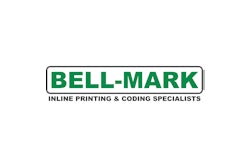
The Food and Drug Administration made its widest-ranging drug packaging dictate ever when it announced in October that the agency wanted manufacturers of antidepressants to put those products in unit-of-use packaging. Never before had the agency mandated a type of packaging for an entire class of drugs.
John Coster, vice president of policy and programs for the National Association of Chain Drug Stores (NACDS), calls the move “very unusual.” He points out that drug stores filled about 150 million prescriptions for antidepressants in the past 12 months.
Currently, manufacturers ship antidepressants in bulk quantities to pharmacists, who repackage the medication into individual containers and apply a label to each container. The packaging initiative was one element of a broader strategy aimed to alert consumers to the risks of antidepressants, particularly concerns about suicide in young people.
“The big news here,” confirms Peter Mayberry, executive director of the Healthcare Compliance Packaging Council (HCPC), “is the FDA is dictating packaging for an entire class of drugs.” Mayberry adds that the HCPC will be encouraging the FDA to force manufacturers to put antidepressants into blister packaging.
But the FDA doesn’t appear ready to force anyone to do anything just yet. The agency’s press release detailing its antidepressant initiatives used fairly neutral language with regard to the agency’s packaging intention. It stated the FDA “intends to work with manufacturers to implement ‘unit-of-use’ packaging.”
Christine Parker, a spokeswoman for the FDA, explains, “We will request unit-of-use packaging and expect compliance. If there were a refusal, we’d have to consider how distribution could be assured. Doing this will be a challenge for some companies, and we are committed to working to ensure it gets done.”
Importance of MedGuides
In truth, the FDA may be a little less concerned with unit-of-use packaging as an end in and of itself. It appears more interested in using packaging as a means for getting medication guides (MedGuides), into the hands of consumers.
MedGuides, now required to be issued with each prescription, are consumer-friendly, simplified versions of the package insert that highlight the medication’s potential adverse effects in easy-to-understand language. Previously, the FDA had mandated MedGuides for about 20 drugs, but never for whole classes of medications.
The MedGuide for Accutane, for example, is at the end of the package insert, which is glued to a blister pack containing the pills. Again, it is not clear whether the FDA will be pressing drug manufacturers to attach MedGuides directly to unit-of-use packages.
The manufacturer of Accutane, Roche of Basel, Switzerland, had put the drug in 10-pill blisters prior to the FDA insisting on a MedGuide in 2001. At first, Roche used a separate MedGuide that it supplied to pharmacists, who handed them out to customers when they came into the drug store to pick up their prescription. But this was always seen as an interim step, according to Roche spokeswoman Gail Safian.
Roche intended from the start to make the MedGuide part of the package insert and glue it to the package, but was waiting for FDA approval of the language in the insert and getting its labeling ducks in a row on the production line.
Adding a “black box” warning
Besides MedGuides, the FDA gave manufacturers of antidepressants such as Prozac (Eli Lilly), Effexor (Wyeth), Zoloft (Pfizer), Celexa (Forest), and Paxil (GlaxoSmithKline) a second label edict: Add “black box” warnings on the package inserts that are read by healthcare providers.
Of course there are other unit-of-use options besides blisters. Renard Jackson, executive vice president of sales and business development for Cardinal Health, which has a contract packaging unit, says a drug manufacturer could opt to put antidepressants in a unit-of-use pouch instead of a blister. Pouches come in a couple of different varieties. Of course, nothing would stop a manufacturer from putting 30 tablets in a plastic vial, such as pharmacies use, and sending that, with a label—and ultimately a MedGuide—to the pharmacist. But that would require a whole rethinking of packaging and production for a drug manufacturer.
The development of a MedGuide, addition of the black box warning, and the packaging changes will cost drug manufacturers considerable amounts of money. So there is likely to be much back-and-forth between the industry and FDA on all the elements of the agency’s antidepressant safety strategy.
Doug Petkus, a spokesman for Wyeth Pharmaceuticals, Madison, NJ, manufacturer of Effexor, one of the antidepressants touched by the FDA initiative, says, “We are currently in dialogue with the agency on this issue.”
One wonders whether the FDA’s unit-of-use full court press on antidepressants opens the way for a similar push for other medications, such as COX-2 inhibitors, the arthritis medication class that includes Vioxx, whose safety problems led Merck to pull it off the market.
In early November, Pfizer, New York, NY, disclosed in a filing with the Securities and Exchange Commission that it expected the FDA to insist on a black box warning on the package insert for Bextra, its COX-2 drug.
That disclosure raises the question of whether the FDA is contemplating a unit-of-use push for COX-2 inhibitors, too.





























